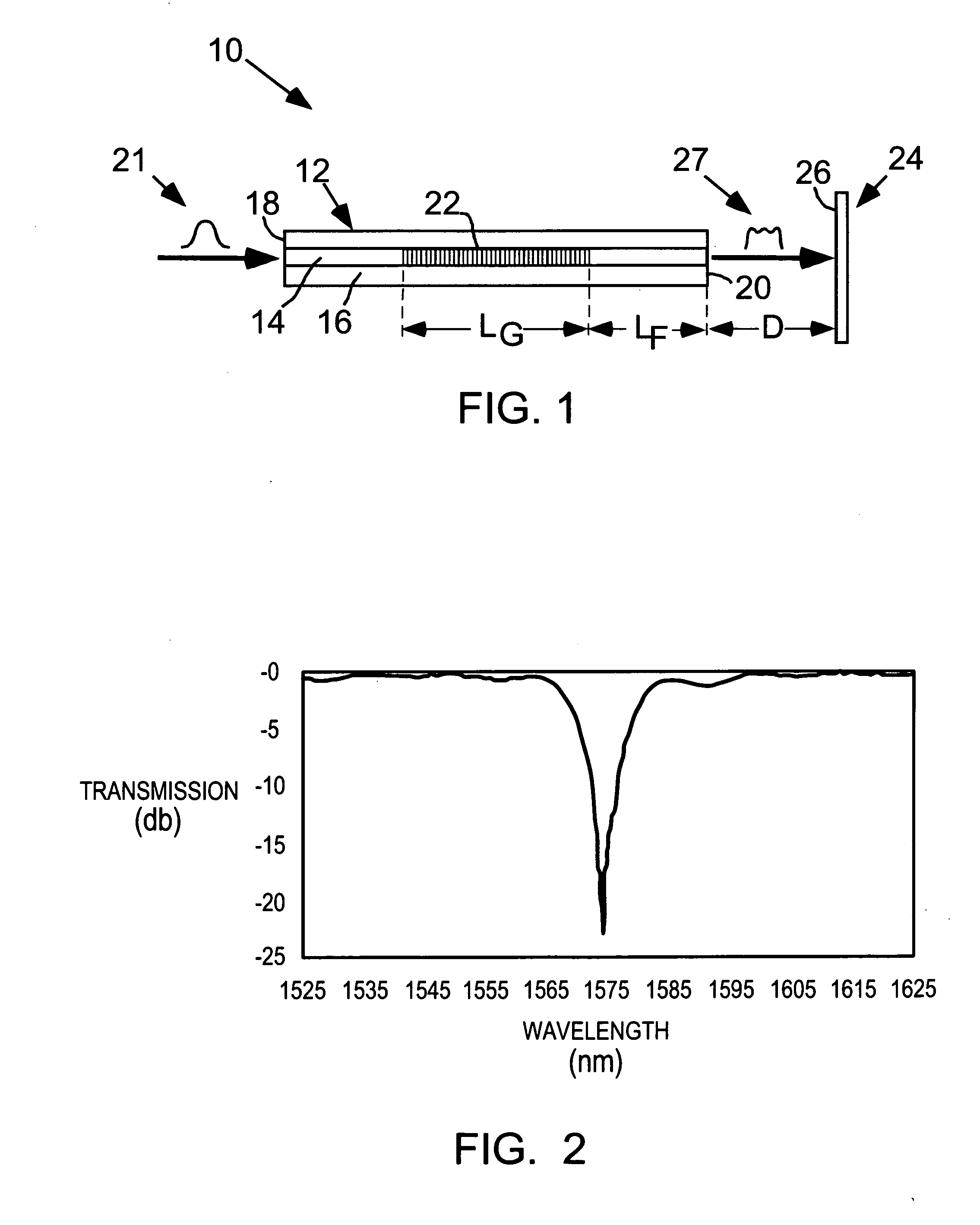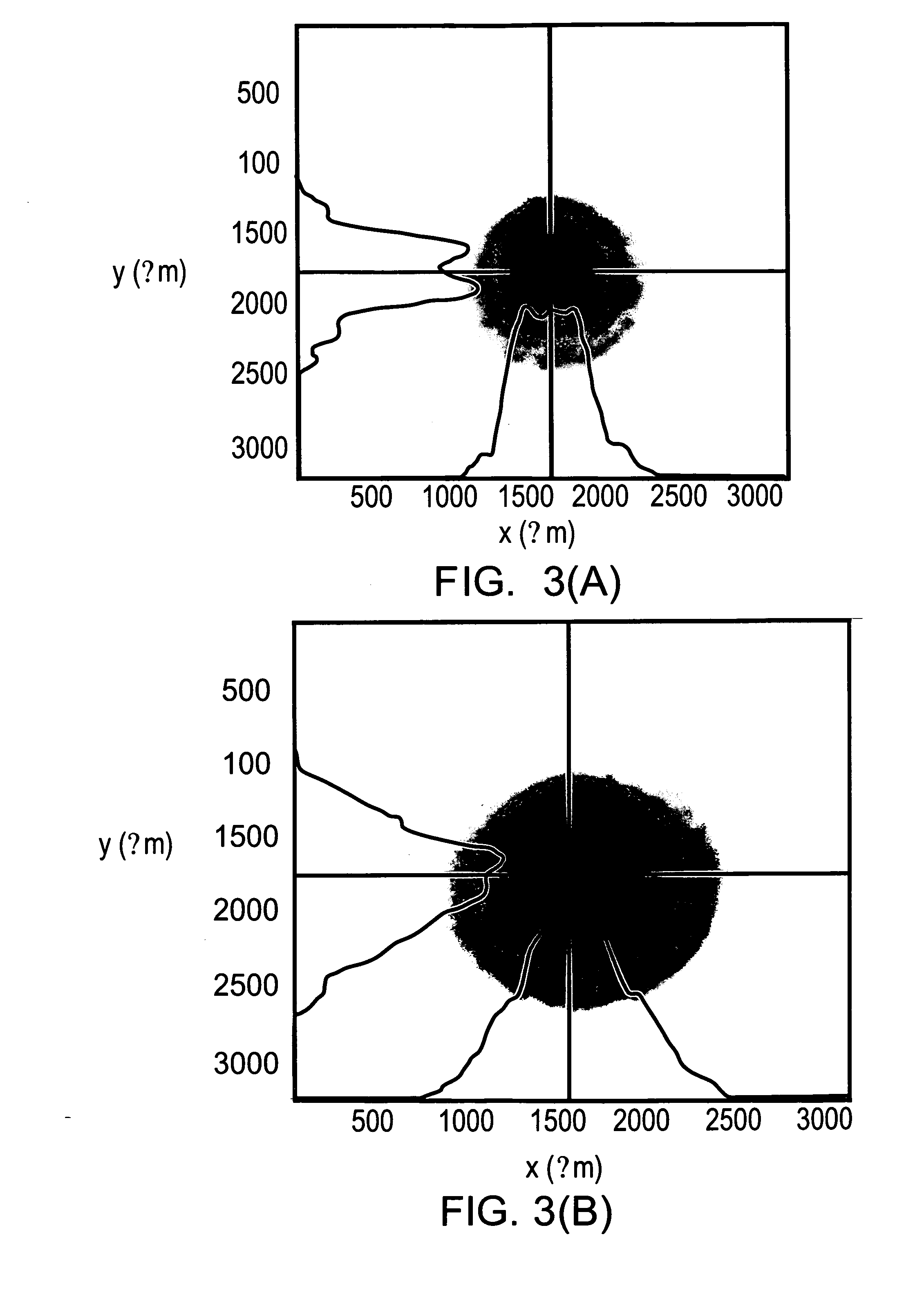Shaping a laser beam with a fiber-based device
a fiber-based device and laser beam technology, applied in the direction of laser optical devices, optical light guides, optics, etc., can solve the problems of incompatibility with single-mode fiber use, power loss generation, and power loss at the operative surface of the optical components, so as to reduce the field intensity, enhance the field intensity, and increase the beam size
- Summary
- Abstract
- Description
- Claims
- Application Information
AI Technical Summary
Benefits of technology
Problems solved by technology
Method used
Image
Examples
Embodiment Construction
[0019]Reference is made to FIG. 1, which schematically illustrates a prototype fiber-based device 10 that effectively converts a Gaussian shaped beam into a beam of substantially uniform intensity. The device 10 comprises a single mode fiber 12 with a core 14, a cladding 16 surrounding the core 14, an input end 18, and an output end 20. The input end 18 receives a laser beam from a tunable laser (not shown) operating in the near infrared range, which beam has a typical Gaussian intensity profile 21. The laser beam is guided within the core 14 toward the output end 20 of the fiber 12. The device 10 also comprises an LPG 22 inscribed inline with the core 14 of the fiber 12 upstream of the output end 20 of the fiber 12, which LPG 22 couples a portion of the light guided in the core 14 into the cladding 16 for forward propagation toward the output end 20. In this embodiment, the core mode is coupled to the LP03 cladding mode. The LPG 22 has a length designated LG and is spaced a distanc...
PUM
 Login to View More
Login to View More Abstract
Description
Claims
Application Information
 Login to View More
Login to View More - R&D
- Intellectual Property
- Life Sciences
- Materials
- Tech Scout
- Unparalleled Data Quality
- Higher Quality Content
- 60% Fewer Hallucinations
Browse by: Latest US Patents, China's latest patents, Technical Efficacy Thesaurus, Application Domain, Technology Topic, Popular Technical Reports.
© 2025 PatSnap. All rights reserved.Legal|Privacy policy|Modern Slavery Act Transparency Statement|Sitemap|About US| Contact US: help@patsnap.com



